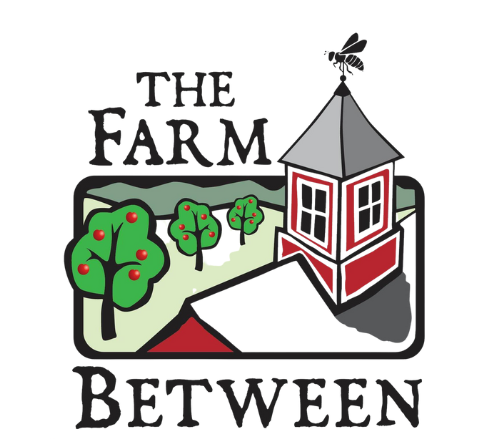Apple Tree Planting & Care
Apple trees are extremely adaptable and can be found growing in most regions throughout the United States. Though several pests and diseases have evolved alongside them, it is possible to grow apples organically by giving the trees proper care, especially when they are young. At The Farm Between, we strive to offer hardy, disease-resistant, and regionally-adapted varieties for easy maintenance.
Size, Spacing, and Bearing Age: We offer apple trees on both standard and semi-dwarf rootstock. Standard trees can grow to 25-30 feet at maturity, while semi-dwarf trees stay at 15-20 feet. Spacing between trees should be equivalent to mature height. The trees we offer for sale range in age from one to three years. Semi-dwarf trees typically begin bearing at 3-5 years of age, and standard trees at 6-8 years.
Pollination: Apple trees require a second variety (or a crabapple) for pollination. The following are not great pollinators, so a third variety may be required: Arkansas Black, Ashmead’s Kernel, Baldwin, Bramley’s Seedling, Jonagold, Rhode Island Greening, Roxbury Russet, and Winesap.
Soil & Site Selection: Apple trees require full sun and fertile, well-drained soil with a pH of 6.0-6.8. Don’t worry if you don’t have the perfect conditions, as most soils can be amended, but do avoid poorly drained areas. Because they require regular watering throughout the first growing season, make sure to site them where you have easy access.
Planting: See Planting Guide and Bare Root Planting for instructions.
Pruning: Other than removing dead, damaged, or diseased branches, and any that are crossing or growing in toward center, you will want to avoid pruning your tree until it begins bearing. Apple trees are generally pruned to a central leader, with several main scaffold branches spaced evenly around the tree. After establishing the basic structure, remove any crowded or crossing branches, any that are growing in toward the center, and thin any excess growth in order to maximize sunlight and airflow throughout the tree, as well as stimulate new growth. This increases fruit set and ripening, and helps prevent the spread of disease.
Pests & Diseases: The pests that can do the most damage to young apple trees are deer, voles, and the round-headed apple borer. The latter can be identified by orange sawdust at the base of the tree. If spotted, use a sharp knife to cut through the tunnel and remove the grub. This may seem extreme, but if left unchecked it will eventually kill the tree. Keeping weeds away from the trunk will help discourage borers. A 5-6’ wire cage around each tree will discourage deer, and hardware cloth or a plastic tree guard will prevent voles from girdling the trees (and may also limit borer damage, but be sure to check beneath them regularly).
Fire blight is the most likely disease to affect young apple trees. It is evident by wilting at the ends of branches in the shape of a shepherd's crook, followed by leaves turning brown and eventual blackening of the branches. If spotted, remove immediately at least 12 inches below sign of infection, burn the infected branch, and sanitize pruners with rubbing alcohol or bleach solution. Avoid over-fertilizing and over-pruning young trees, as that can cause excess growth which is susceptible to infection. Sunscald or Southwest injury occurs in the winter when warm daytime temperatures are followed by freezing temperatures, causing the bark to split. It can be prevented by using a white plastic tree guard during the winter months, but be sure to remove it during the growing season as it can cause moisture to build up on the trunk.
